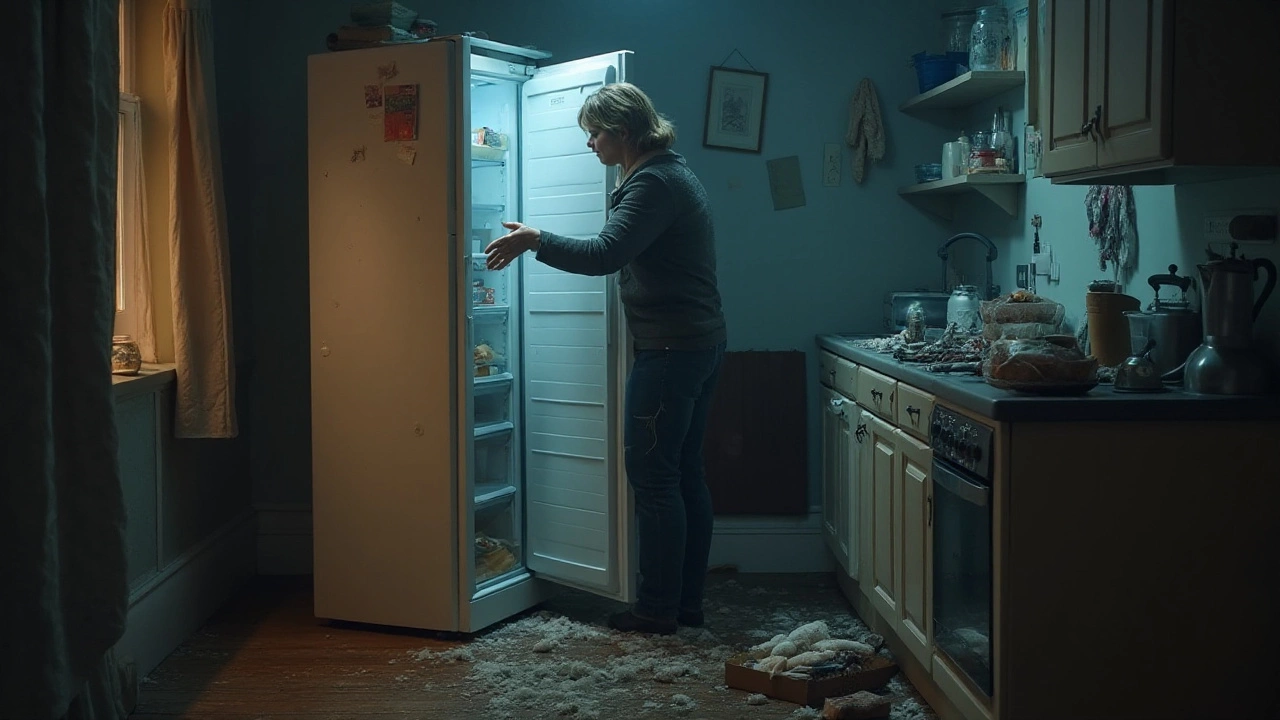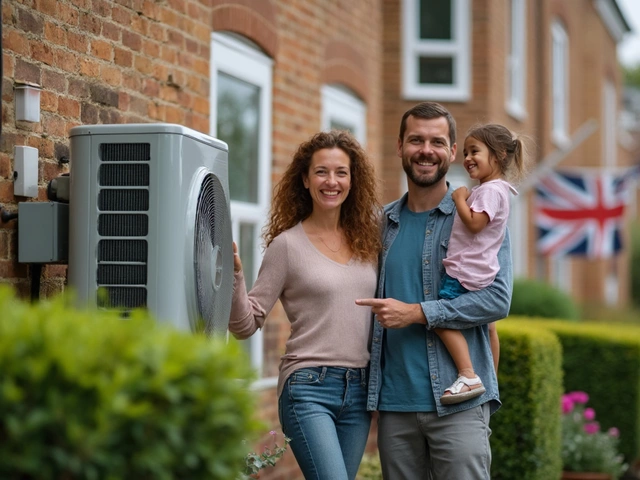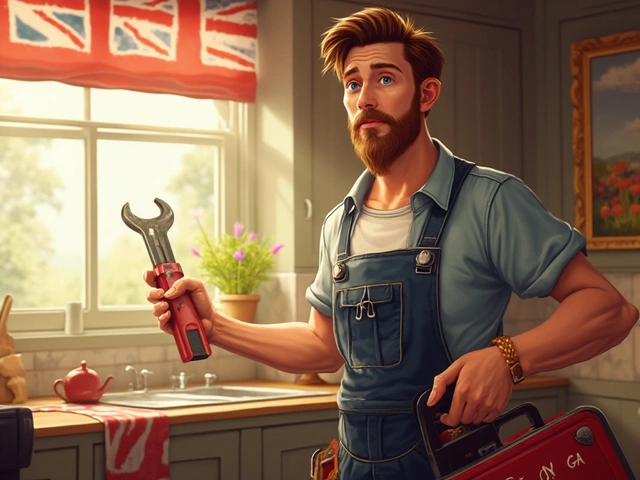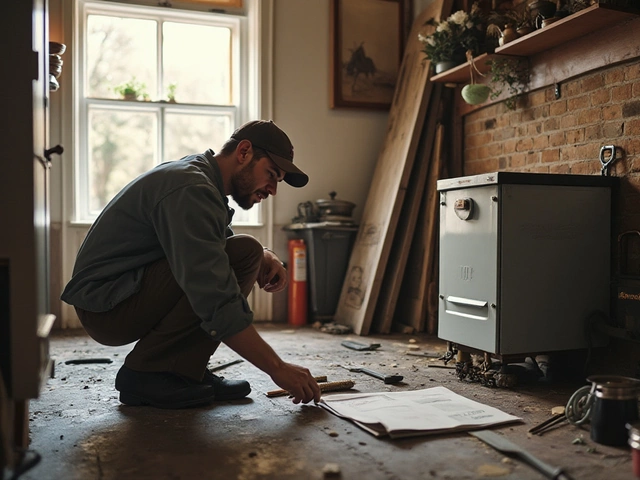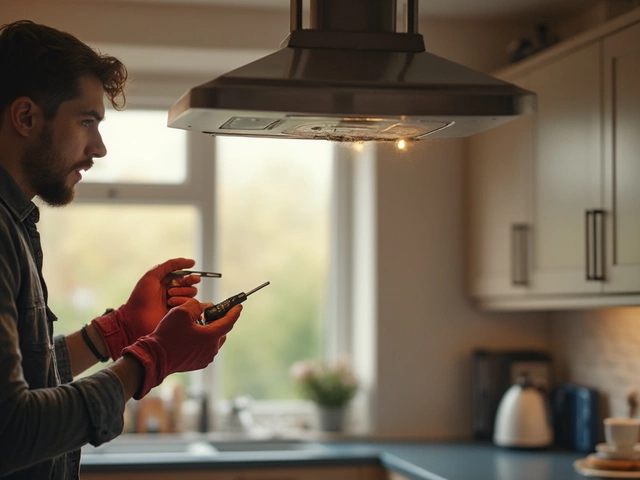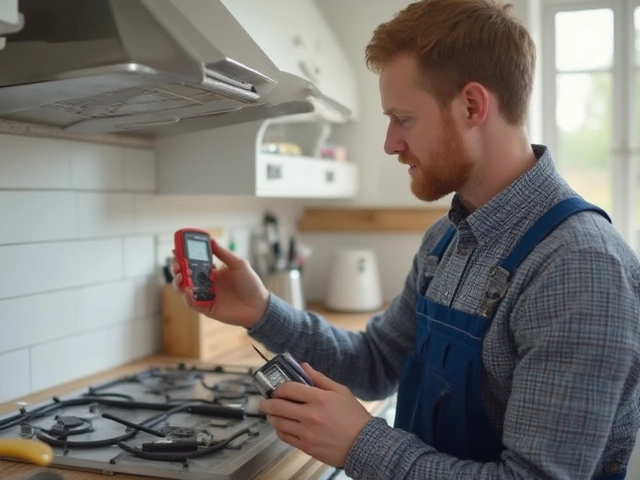Nothing can send a chill down your spine like discovering your freezer has stopped working unexpectedly. Those popsicles you'd been craving or the frozen meals you've been counting on for busy nights might be at risk. Before frustration sets in, it's crucial to understand what's causing the malfunction and how you might fix it or whether calling in a professional is the best route. So, let's dive into the icy depths of freezer issues and unravel the mystery of why it may have suddenly gone on strike.
Freezers can act up for various reasons, and understanding these can save both your food and a hefty repair bill. Some issues may be as simple as a misbehaved plug or an overlooked setting, while others could require a keen eye on the mechanical aspects. Identifying the problem is often half the battle, which is why we'll arm you with insights into some common culprits and their solutions. Once you know where the problem lies, taking action becomes a lot less daunting.
- Understanding Power Supply Problems
- Inspecting the Thermostat
- Checking the Door Seal
- Evaluating the Compressor
- Recognizing Strange Noises
- Maintenance Tips for Longevity
Understanding Power Supply Problems
A freezer is a trusty appliance that works tirelessly in the background, preserving our food by maintaining a consistent freezing temperature. But when a freezer suddenly stops working, one of the most straightforward causes to investigate is a disruption in its power supply. Freezer repair doesn't always mean diving into the mechanics. Often, it's about checking the basics first, and the electrical supply line is the perfect place to begin.
One of the first things to consider is whether the freezer is properly plugged in. This might seem too obvious to be the root of the problem, but a loose plug or a power cord that's been inadvertently yanked from its socket can very well be the culprit. Check to ensure the cord is snugly and securely fitted into the outlet. If the plug and cord look fine, then it's time to move to the circuit breaker. A tripped breaker or a blown fuse is a common nothing-to-panic-about issue. These are usually quick fixes that restore power instantly. Locate your home's electrical panel and see if the switch for the outlet circuit has tripped—if it has, flip it back. Be mindful that if the breaker trips again, this might indicate a more significant electrical problem requiring a professional electrician's attention.
An electrical glitch could also stem from the outlet itself. You can easily test the outlet using another appliance that you know works—such as a lamp or a phone charger—to determine whether the outlet is the issue. If the alternate appliance fails to function, the problem likely lies in the outlet. Some homes are equipped with outlets that include a reset button (often known as GFCI resets); these can require a manual reset to resume normal function. Make sure to check whether the freezer is plugged into a GFCI outlet and perform a reset if available. Also, consider the possibility of an internal power surge protection mechanism in the freezer that might have tripped, though this is less common.
Another factor to consider is power fluctuation, which, although not frequently discussed, is quite significant. Sometimes, the power supply issue isn't about an outright lack of electricity, but rather inconsistencies in power delivery, known as power surges. Large appliances can cause minor surges that impact delicate electronics within a freezer, potentially damaging the control board. This situation is often mitigated by using surge protectors. The appliance industry frequently discusses the importance of surge protection, with Consumer Reports noting,
Unprotected appliances are often at risk during sudden electrical surges, which can occur even from regular appliance operations.Think of power strips with built-in surge protectors as an inexpensive insurance policy against these sudden spikes in power.
As you delve into this process, always maintain safety as your primary focus. Work to ensure that the freezer is unplugged when you're inspecting or making any adjustments. If you're unsure about what's safe or how electricity works in your home environment, do not hesitate to reach out to professionals. Sound advice from industry specialists can be invaluable—especially when dealing with something as fundamental as electricity. Remember, the goal here is to resolve the issue without compromising your safety or causing further damage to the freezer or your home's electrical system.
Inspecting the Thermostat
When your freezer starts acting like it's on a tropical vacation, the thermostat is one of the first places to check. This little device is at the heart of temperature regulation, ensuring the compressor kicks in when things get too warm. If misbehaved, it can cause the freezer either not to cool at all or turn your ice cream into an unintended smoothie. Start by examining the settings—sometimes, the solution is as simple as adjusting the dial. Users often bump or reset the thermostat without realizing it, especially if it's located in a fairly accessible spot. If the freezer isn't cooling, set it to a colder setting and listen for a faint click—this sound typically signifies the compressor receiving the cue to get into action.
Next, it's time to move deeper into the mechanics if the settings appear to be in order. A malfunctioning thermostat might not properly measure temperature, leading to an imbalance in cooling cycles. To test this, you'll need a multimeter after ensuring the freezer is unplugged for safety. This device will help determine if the electrical pathway through the thermostat is open or closed, indicating its functionality. If the thermostat does not display the continuity expected—typically a closed circuit when cold and an open one when warm—it might be faulty. At this juncture, replacing the thermostat becomes a prudent course of action.
Repairing any appliance can be a nerve-wracking endeavor, with thermostats being both delicate and essential. However, DIY checks and fixes can prove economical if done with care and attention. Remember, refrigerators and freezers were dubbed the 'kitchen workhorse' by Consumer Reports, meaning every component, including the modest thermostat, plays a crucial role. Ensuring it's functioning as intended could very well be the key to maintaining your appliance's health and your food's safety.
Don't overlook the thermostat’s placement, either. Sometimes, its proximity to sources of heat within the freezer, such as lighting elements, might skew readings—leading to a misinterpretation of the actual need for cooling. Shuffling about a few things, ensuring enough space around it, and checking if lighting is generating excess heat might just rectify the hiccup. With a bit of detective work, your freezer might be back to keeping cool without the need to dive into other technicalities of freezer repair.
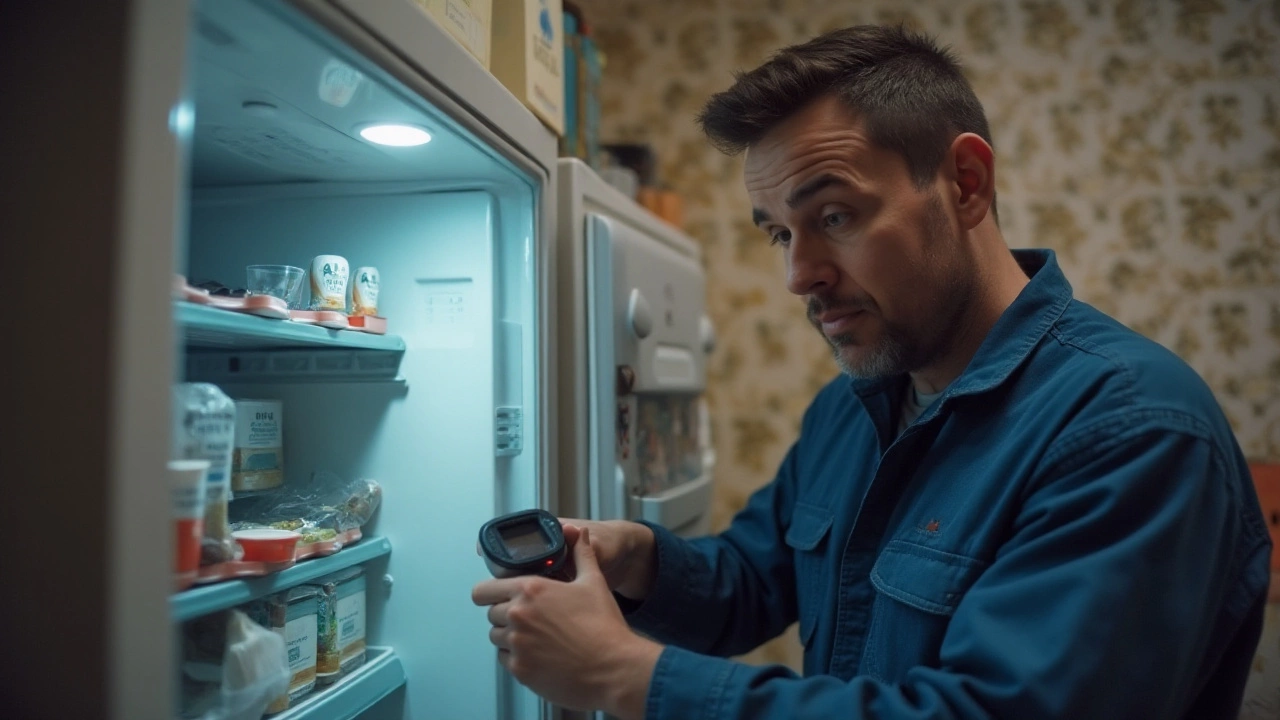
Checking the Door Seal
When your freezer stops working efficiently, one of the first components to inspect is the door seal. This rubber gasket, lining the perimeter of your freezer door, plays a vital role in maintaining the correct temperature by keeping cold air in and warm air out. A compromised seal can lead to a host of issues, including frost buildup, uneven cooling, and increased energy consumption. To ensure the freezer repair leads to optimal performance, it's essential to evaluate the seal's condition thoroughly.
The simplest way to test the integrity of your door seal is through the dollar bill test. Open the freezer door, insert a dollar bill halfway, then close the door. If you can easily pull the bill out without any resistance, it's a clear indication that the seal isn't functioning properly and may need replacement. Over time, seals can become brittle or crack due to temperature fluctuations or general wear and tear, diminishing their effectiveness. It's crucial to regularly inspect the seal, gently cleaning it with a damp cloth to remove any accumulated debris that may hinder its adhesive qualities.
Common Door Seal Problems
Door seals have a simple construction but they are pivotal in your freezer's efficiency. Even a small gap can make your appliance work overtime to maintain its set temperature. Common issues include mold or mildew growth, caused by air leaks that allow moisture to enter, or physical damage such as tears or warping. If these problems are unaddressed, not only does the freezer issue become a persistent problem, but you're also looking at increased electricity bills.
"The Door Seal is a largely underestimated part of your freezer," explains Jill Notini, a representative from the Association of Home Appliance Manufacturers. "Regular checks and maintenance can significantly extend the lifespan of your appliance and reduce energy costs."
If replacing the seal becomes necessary, contact your freezer's manufacturer or a reputable dealer to ensure you get the correct replacement part. Installation usually involves snapping the new gasket into place, a task that many individuals find manageable with a bit of patience and attention to detail. However, always consult your freezer's manual or a professional technician if you're unsure about the process. A well-functioning seal not only ensures your food remains frozen at consistent temperatures but also enhances the overall longevity of your appliance.
Evaluating the Compressor
The compressor can be considered the heart of the freezer, tirelessly working to circulate refrigerant within the system, enabling your appliance to maintain the cold temperatures necessary for food preservation. When it falters, your freezer can lose its cool—literally. Evaluating the compressor begins with listening carefully; a healthy compressor often emits a low humming sound. If your freezer is conspicuously quiet or making unusual noises like clicking or buzzing, that might indicate a problem. Inspecting the compressor also includes physical checks. Is it warm to the touch? Excessive heat can point to an overworked component, possibly struggling due to electrical faults or internal failures.
Before diving into intricate diagnostics, check if the power supply issues have been ruled out. A simple unplug and re-plug might just reset minor glitches that affect the compressor's performance. But if the issues persist, you may need to consider advanced troubleshooting or professional repair. One might be tempted to dive into DIY repairs to save on <$1,000 service calls, but compressors can be quite complex and tampering without experience can cause more harm than good. Online resources and repair guides occasionally advocate for home diagnostics, yet they also caution about voiding warranties or exacerbating the appliance's condition. As an ancient wisdom puts it:
“A little learning is a dangerous thing.”
Visual Inspection and Testing
Visually inspecting the compressor components, including the start relay and capacitor, can offer additional clues to its health. Look for obvious signs like burn marks or damaged wires, which could suggest electrical issues. An inexpensive multimeter can help homeowners test these elements safely. Be cautious, as mishandling electrical testers or components may lead to safety hazards. If the problem resides in these parts, replacements are sometimes inexpensive and straightforward enough for a skilled DIY enthusiast to handle.
If you’re comfortable and equipped, testing the compressor's resistance might be insightful. Specifically, measuring the resistance between the start winding and the run winding can provide critical insights. However, unless one is quite technically inclined, these tests are best left to professionals who can interpret readings correctly.
Compressor issues can sometimes be elusive, as they might overlap with other problems, such as refrigerant leaks or faulty thermostats. A professional technician can often diagnose these problems with specialized tools and knowledge, ensuring a comprehensive repair rather than a temporary fix. Tenacity and patience are key, as compressors are complex, and understanding their function can significantly impact the efficiency and longevity of your freezer.

Recognizing Strange Noises
Your freezer, a veteran player in the orchestra of home appliances, should naturally hum along to a mostly unobtrusive tune. But when it decides to improvise with odd noises, it's time to sit up and take notice. A change in melody often signals that something's not right beneath the cold surface. Recognizing these noises early can prevent potentially expensive fixes down the line. Let us tap into some of those unsavory sounds, their causes, and what they mean for your appliance's health. Just like Mozart wouldn't want a trumpet interrupting his symphony, your freezer prefers to avoid unnecessary racket. Different sounds correspond to different issues, each with its significance and remedy potential.
A gurgling noise, for instance, might not be cause for concern. It's often just the refrigerant settling in its lines, doing what refrigerants are supposed to do. However, if the gurgles are constant and loud, it could point to a blockage, necessitating a closer look. On the contrary, a rattling sound could be as benign as items vibrating on top of the appliance or as concerning as a loose fan or motor part. Before you let panic set in, move items gently until they are a safe distance from the freezer's surface. Meanwhile, fixing an internal component might require opening the unit's backside, which is a job best left to technicians if you're not DIY-inclined.
Should your freezer start knocking loudly or emit a clunky banging, it's hard to ignore, yet also vital that you do more than turn up the television. Loud bangs can highlight issues with the compressor, a critical cog in the cooling machine. Without it, your freezer is little more than an oversized pantry. A banging or clanking noise may mean the compressor itself is failing and needs immediate attention. To confirm, unplug the unit and see if the sound stops. If it persists when plugged back in, professional assistance is advisable. In some cases, issues arise from the compressor's mounting springs, which can get out of sync.
For unusual whirs or buzzes, listen closely to discern if the evaporator fan or motor is to blame. When these parts labor under dust or dirt, they tend to protest audibly. Cleaning them might require disassembling parts of the freezer, clearing blockages, and reassembling everything. If you're comfortable, this can be a good DIY opportunity. Sometimes, however, the noise indicates the parts are old and need replacement, a task often best handled by someone trained. As it happens, neglecting such noises could pile up costs, turning minor issues into major headaches.
The hiss or sizzle of your appliance isn't necessarily the alarm bell it sounds like. Often attributed to the defrost cycle, the noise emerges when water hits the heater. But, when associated with an unpleasant smell, it could suggest issues with electrical circuits. An electrical concern might imply something serious, such as a failing defrost timer, so unplugging the freezer and seeking a repair professional's input is highly recommended. Your freezer engages in a symphony, and while some notes are routine, those unfamiliar sounds are worth investigating.
According to the team at Consumer Reports, "Regular maintenance is often overlooked until something breaks, but recognizing symptoms early can save both your appliance and budget."
Take heed of each unusual note your freezer composes; you might prevent an unwelcome crescendo of repair costs.Being proactive about unusual sounds involves regular monitoring. A little vigilance can maintain harmony in your kitchen and keep its melodic hum steady and serene. Protecting such a crucial appliance in your home is no small task but ensuring it runs smoothly means you continue to rely on it daily without second thought.
Maintenance Tips for Longevity
Maintaining a freezer isn't just about keeping it plugged in and hoping for the best. Ensuring a long life for your appliance involves a bit of regular TLC to keep those gears turning smoothly. One of the first tips on the list is to check the door seals. Those trusty seals on the freezer door play a monumental role in temperature control. A simple way to determine their effectiveness is to perform the paper test — close the door over a sheet of paper, and if you can easily pull it out, the seal may need replacing. This ensures your freezer isn’t working overtime, trying to keep things cold with air seeping out.
Another crucial task is to clean the condenser coils. These coils, usually located at the back or the bottom of your appliance, can collect dust and dirt, reducing efficiency. Unplug the freezer and give these coils a good cleaning every six months. It’s a straightforward task that can save you loads of energy and even lower your electricity bill. Regular cleaning can extend the life of your appliance significantly. Speaking of cleaning, don't forget to wipe down the interior of your freezer periodically. Spills can lead to odors and the buildup of frost over time, which can also impact performance.
Managing Temperatures
Monitoring and properly setting the thermostat might seem like a no-brainer, but surprisingly, it’s often overlooked. Your freezer compartment should typically be kept at or below 0 degrees Fahrenheit (-18 degrees Celsius). Investing in a small freezer thermometer can help you keep tabs on any fluctuations. Keeping a fully stocked freezer actually helps to maintain its temperature, but be cautious of overloading, as it can restrict airflow and cause the unit to work harder, potentially affecting its lifespan.Regularly defrosting your freezer is another vital maintenance step. Most modern freezers are frost-free, but if you notice a buildup of ice, it might be time for a manual defrost. This could also indicate a potential malfunction in the defrost system. During the defrosting process, take the opportunity to inspect for any damages or unusual wear and tear. Avoiding these minor inconveniences can prevent larger, more costly issues down the road.
As my grandfather used to say, 'A stitch in time saves nine,' and when it comes to appliances, a little preventive care goes a long way in saving both time and money.
Additional Tips
- Freezer repair professionals often suggest adopting a habit of unplugging the unit or turning down the thermostat during long periods of non-use, such as vacations. This small adjustment can help prolong its service life.
- Keep the location of your freezer in mind. Make sure it is placed in a well-ventilated area and not housed up against walls or other appliances that emit heat.

